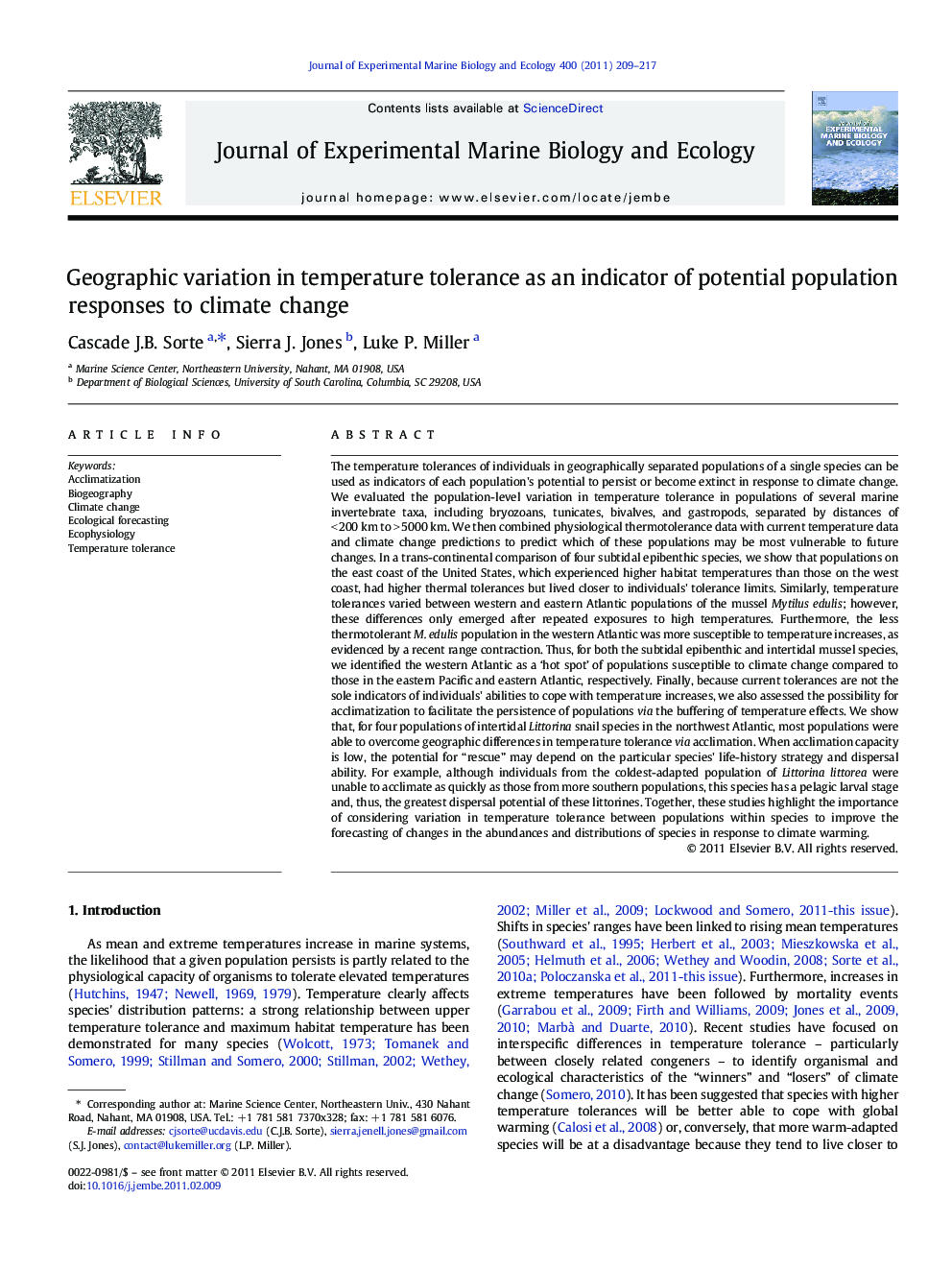| کد مقاله | کد نشریه | سال انتشار | مقاله انگلیسی | نسخه تمام متن |
|---|---|---|---|---|
| 4396349 | 1618463 | 2011 | 9 صفحه PDF | دانلود رایگان |

The temperature tolerances of individuals in geographically separated populations of a single species can be used as indicators of each population's potential to persist or become extinct in response to climate change. We evaluated the population-level variation in temperature tolerance in populations of several marine invertebrate taxa, including bryozoans, tunicates, bivalves, and gastropods, separated by distances of < 200 km to > 5000 km. We then combined physiological thermotolerance data with current temperature data and climate change predictions to predict which of these populations may be most vulnerable to future changes. In a trans-continental comparison of four subtidal epibenthic species, we show that populations on the east coast of the United States, which experienced higher habitat temperatures than those on the west coast, had higher thermal tolerances but lived closer to individuals' tolerance limits. Similarly, temperature tolerances varied between western and eastern Atlantic populations of the mussel Mytilus edulis; however, these differences only emerged after repeated exposures to high temperatures. Furthermore, the less thermotolerant M. edulis population in the western Atlantic was more susceptible to temperature increases, as evidenced by a recent range contraction. Thus, for both the subtidal epibenthic and intertidal mussel species, we identified the western Atlantic as a ‘hot spot’ of populations susceptible to climate change compared to those in the eastern Pacific and eastern Atlantic, respectively. Finally, because current tolerances are not the sole indicators of individuals' abilities to cope with temperature increases, we also assessed the possibility for acclimatization to facilitate the persistence of populations via the buffering of temperature effects. We show that, for four populations of intertidal Littorina snail species in the northwest Atlantic, most populations were able to overcome geographic differences in temperature tolerance via acclimation. When acclimation capacity is low, the potential for “rescue” may depend on the particular species' life-history strategy and dispersal ability. For example, although individuals from the coldest-adapted population of Littorina littorea were unable to acclimate as quickly as those from more southern populations, this species has a pelagic larval stage and, thus, the greatest dispersal potential of these littorines. Together, these studies highlight the importance of considering variation in temperature tolerance between populations within species to improve the forecasting of changes in the abundances and distributions of species in response to climate warming.
► Populations within a species may differ in ability to cope with climate change.
► Geographic variation in temperature tolerance is indicative of coping ability.
► Thermal tolerance varied geographically across several invertebrate taxa.
► Western Atlantic populations were often more susceptible to climate warming.
► Coping with climate change will involve tolerance, acclimation, and dispersal.
Journal: Journal of Experimental Marine Biology and Ecology - Volume 400, Issues 1–2, 30 April 2011, Pages 209–217